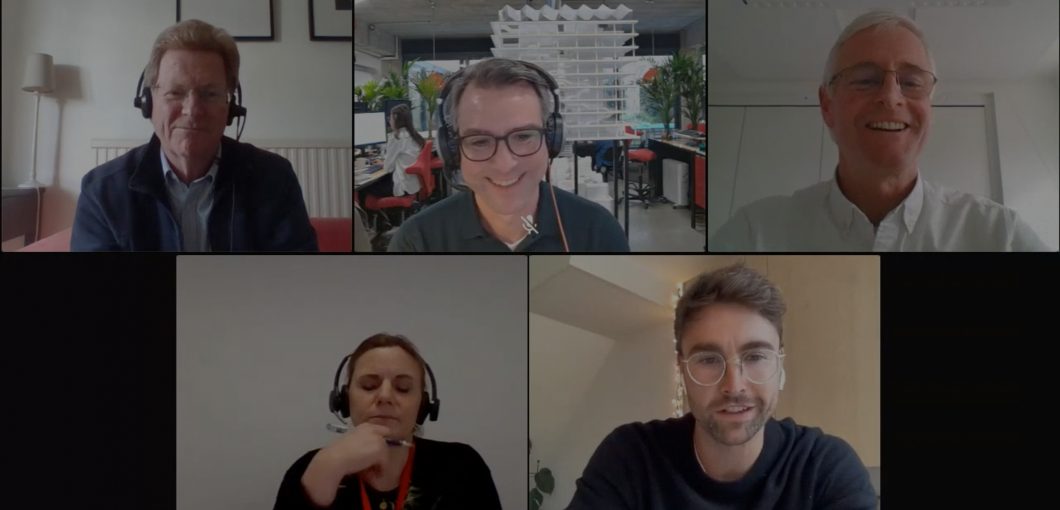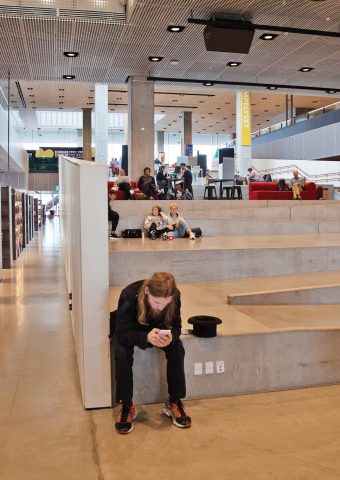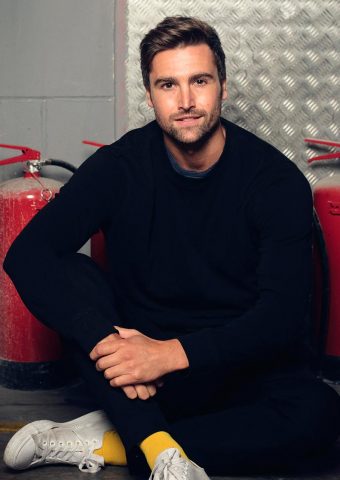
Panel Event Highlights – What changes can be made to the design, delivery and operation of learning environments to fight climate change?
Learning Environments and the Net Zero Challenge
—-
Accounting for more than 2% of the UK’s carbon footprint, the education sector is under increasing pressure to act on climate change. But how should academic institutions tackle such a complex problem?
io.education brought together four experts from across the sector, from design to construction and operation, to discuss how we will ultimately achieve net zero as quickly as possible.
The panel featured:
Nicola Hogan, sustainability manager for operations, King’s College London
David Patterson, partner and head of the education sector, Make Architects
Phil Armitage, senior partner, Max Fordham
Alan Fogarty, sustainability partner, Cundall
Wise use of space
David Patterson and Phil Armitage kicked off the discussion by making the case for repurposing existing buildings. “A lot of HE space or education space is underutilised due to its quality,” Patterson said. By re-using that space creatively, there is potential to avoid wasting carbon that’s already in the structures, while making them more efficient for future operations.
Armitage agreed: “The mindset is that in order to do something good, you have to build a new building. I think the mindset needs to become, ‘how do we make the best use of what we already have?’” Adaptive reuse projects have about 40% lower embodied carbon – emissions released before a building is used – than comparable new builds, he said, which is the equivalent of up to two decades of operational carbon emissions.
However, embodied carbon is less well understood than operational carbon, which is why the idea of re-use is “very much on the side lines”, Armitage said.
Later on in the discussion, Nicola Hogan returned to this question, emphasising that education spaces need to be reconfigured for greater efficiency. Storage areas for things that are only used occasionally – art or furniture, for example – could be repurposed as “people would be almost ruthless in their use of space because no room would be allowed to store something that isn’t used on a regular basis,” she said.
As part of that, buildings should become multi-purpose and modular, incorporating features like moving walls, creating more shared spaces and bringing in more biophilia and outdoor features. This would not simply be a more sustainable use of space. It would also benefit people’s wellbeing, “taking what we used to do inside and taking it outside as much as we can”, Hogan explained.
A hybrid, collaborative approach
“The clarity of brief is really important,” Alan Fogarty said. If a building is to actually be sustainable, the project has to move beyond a “woolly” brief and spell out what the specific deliverables are. Crucially, this means not simply settling for a standard BREEAM certification.
Fogarty said he worked with a university that had used BREEAM for 20 years without seeing an impact on their energy outcomes. Fogarty’s solution was to work out what the university specifically wanted to achieve in its buildings. “We kept the good bits of BREEAM, put in the good bits of WELL and added some good bits from LEED, and you ended up with something that was exactly what they wanted,” he said. “So they only focus on the things that are going to add value to their building project, rather than this one-size-fits-all approach.”
Armitage went on to suggest using Passivhaus, which sets energy use targets for buildings, for “the energy part of the equation” and then less formally adopting other criteria from certification schemes such as BREEAM. That approach, he said, “has been quite successful with a number of planning authorities”.
Alongside this hybrid approach, the experts called for more collaboration. Currently, teams in the design and construction process are almost in competition with each other, working to tight financial constraints. Instead, Armitage suggested, projects should pursue partnerships where one body is responsible for the whole project and engages with different partners along the way.
Patterson echoed that idea, adding: “The real benefit of that will be that it will create innovation in terms of addressing these pressing issues to do with the climate emergency, rather than being in a very adversarial situation in terms of trying to deliver something and being constantly pushed against it during the whole construction process.”
Should we compromise for net zero?
Asked what compromises people will need to make to achieve more sustainable designs, Armitage and Patterson argued that “compromise” is the wrong word.
“If you’re aware of it at the beginning of the process, it doesn’t have to be a compromise,” Armitage said. “Design is a creative process, and it takes constraints. The objective is to make good solutions from whatever constraints exist.”
Patterson added: “I think sometimes projects that have a lot of constraints, maybe conflicting constraints, often result – if you have a good design team – in some of the best projects because they’ve presented some real challenges that have had to be addressed creatively.”
Though they might not be considered compromises, sustainable designs do have to balance costs – both in terms of finances and carbon – and the optimal solutions might not always be obvious. Fogarty used triple glazing as an example.
He said: “You might by default jump to a triple glazing solution. Well, triple glazing is very expensive. It has quite a high embodied carbon content to it. So the question then is if you took that financial resource, would you be able to get a better carbon reduction somewhere else?”
How that equation plays out depends on where you are in the country, and it will change as winters get warmer, for example. “These things are very, very interlinked and very complicated,” Fogarty said. “You actually need to have a whole new suite of tools to be able to properly assess these.”
What the education sector needs to do now is learn how to make those calculations, account for every relevant variable and learn to predict their implications and outcomes.
Student pressures
As complicated as much of this is, the sector cannot avoid it because pressure is building up on all sides. Students, in particular, are playing a vocal role in demanding sustainability.
The balance of power within universities has shifted in favour of students in recent years. Unlike in the past, they are now paying customers and they want more for their money. That includes attending a university that takes sustainability seriously.
Hogan recounted her experience from King’s College’s welcome week: “Students were very keen to ask us about what our sustainability objectives were, what our targets were. They were very keen to hear that we have an overarching net zero carbon target of being net zero carbon by 2025. And more importantly, they wanted to know how they could get involved.”
Students want to read the university’s end of year environmental sustainability reports. They want to see that food is sourced ethically. Moreover, they are likely to share all that with their friends at other universities. All this adds pressure on institutions to deliver on their targets.
“We are competing with other big universities, other Russell Group universities, for customers, dare I say,” Hogan said. Where sustainability was once a nice thing to include, it has now become a necessity.”
Schools leading the way
Although the sector has a long way to go in becoming truly sustainable, there are some ways in which schools are ahead of the curve.
The Department for Education has focused on school design for years, introducing environmental standards to bring them up to a decent level in areas that other sectors have not quite cracked. For example, most sectors don’t use “proper metrics” for measuring natural light, according to Fogarty. “Usually for daylighting, we use daylight factor – BREEAM uses it all the time. That doesn’t matter whether your building is north, south, east or west. It just looks at light from an overcast sky,” Fogarty said.
Schools, however, use a daylight index, looking at what happens in the space on an hourly basis over the course of the year. As a result, spaces have got bigger – classrooms have gone from 2.7m to 3.3m high – and Fogarty said they are looking at light redirecting devices to get light into all spaces in a classroom.
“It’s completely transformed it,” Fogarty said of schools’ design standards. “So there’s a lot of things that can be learned from the school sector itself.”
Education now has the opportunity to further lead the way in sustainability. King’s College is working on its first “clear strategy and action plan” for embedding sustainability in its capital projects, Hogan said. The university has identified areas where it has gone wrong in the past and how it will turn those into lessons learned.
With plans to share those lessons once the strategy is complete, King’s College is reminding the sector that reaching net zero requires a collective effort. Decarbonisation is possible, but success will rely on us sharing our understanding, creating innovative partnership and tackling emissions together.
Register to see the questions from the audience and to hear about future events :
https://www.crowdcast.io/e/learning-environments-and-the-net-zero-challenge




Comments
Tell us what you think